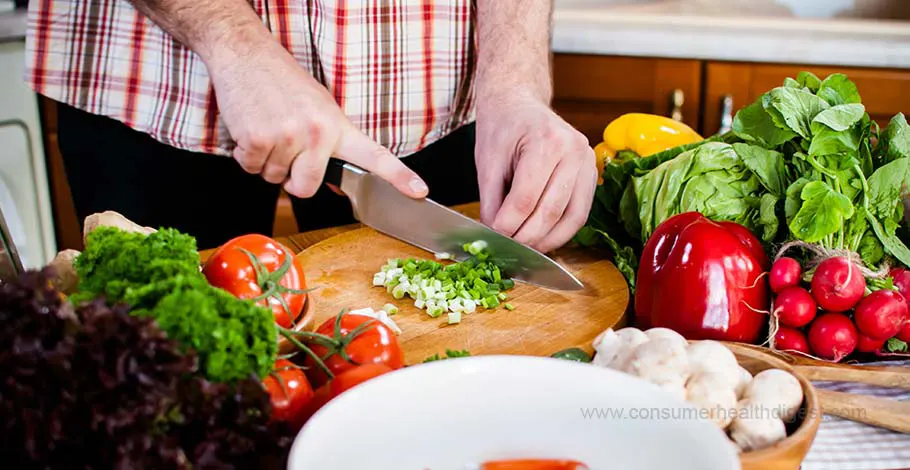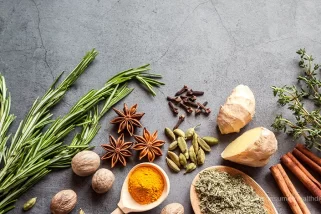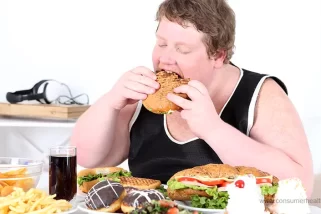While we are all striving towards an overall healthier lifestyle, it can become quite difficult and even confusing at many times. We often do not get the time to adequately attend to our health – many people think that cooking healthy meals takes a significantly longer amount of time.

We rush from one task to the next during the day – from breakfast and taking the children to school, to getting to work, and finally, just when you think you can relax at home, you have to get up and cook healthy foods to eat. Thereafter you have to make sure the children have done their homework, ensure they take a bath, and then put them to bed. There is only so much time in a day.
Another particular problem that people face when it comes to living a healthier lifestyle – diet-wise at least, is the fact that there is a mixed opinion on the most appropriate methods for preparing health available.
While some publications may claim foods lose their most important nutrients when cooked, others suggest that some foods contain antioxidants and nutrients that can only be properly absorbed when cooked.
To make things even more complicated, a variety of cooking methods exist.
Should you boil your food?
Or rather opt for quick stir fry?
Maybe grilling is a good option, but what about the fact that this type of food preparation has been linked to an increased risk of cancer.
There is also boiling, steaming, broiling, and poaching. How do you choose a healthy lifestyle without sacrificing essential nutrients or harming your body?
We have taken it upon ourselves to find the best ways in which food can be prepared in order to support a healthier lifestyle.
Read on to find out more about what foods you should eat raw and which ones you should cook, and also what type of preparation method you should use when cooking the foods that are more beneficial when cooked.
Clean & Healthy Cooking with Top Food Experts
These tips and tricks from chefs and food pros can help you spend less time in the kitchen.
#1. By Tabitha Daley
As a registered dietitian, I encounter many clients who seek to change their eating habits, whether it's swapping out white bread for wheat bread or beginning to portion out their meals and snacks.
A person might have the portions properly controlled for as well as an abundance of vegetables, whole grains and lean protein in their diet, but my question always comes down to how is the meal being prepared? There are several different methods of cooking that can be essentially categorized as either a dry or moist heat method.
Some methods of dry heat include baking, steaming, grilling, sautéing, and roasting. These methods are classified as dry heat due to the use of heat being transferred to the food without the use of liquid. Moist heat, which consists of your poaching, simmering, boiling, and stewing, involves the use of liquid to cook the food of choice. Liquids may range from water, wine, or stock.
Here are Three of My Top Recommendations on Healthy Cooking Methods:
Steaming: One of my favorite methods of cooking is steaming. I personally enjoy steaming vegetables (broccoli, asparagus) as well as my fish, as it truly seals in the flavor and preserves the nutrients.
It's also a great way to eliminate the need for added fats in the process of cooking. If you don't have a steamer, placing a perforated basket over a pot of boiling water will work just fine.
Broiling: Ever wonder what the bottom portion of your oven can be used for? Broiling! Broiling is a type of dry heat method of cooking (as in, no additional liquids or oil is used to cook) similar to grilling, except the heat, it comes from an above source.
Because it is a dry heat method of cooking, using a marinade on your choice of meat will actually assist in the tenderizing process to give you that nice, moist cut and prevent those tough, hard-to-chew meals.
Sautéing: This type of dry heat method involves the use of a small amount of pat mixed inside of a hot pan. Note that sautéing differs from “panfrying” by the use of less fat while cooking as well as higher temperatures.
Next time you want to add vegetables to your dish, try tossing in a variety of peppers, onions, and carrots together and continue stirring the mixture to allow even distribution of heat.
What else can you do besides alter your cooking method to make your meals healthier?
- Reduce the salt used in your meals—check the nutrition facts label to see the sodium content of the items you add to your dishes. Chances are the lower-sodium or salt-free versions are just as good.
- Don't be afraid of the spice rack—try combining different spices together to make your salt-free rubs for your meat of choice. Feeling spicy? Try combining cumin, red pepper flakes, and chili powder.
- Replace higher fat products with lower fat versions- Choose 90/10 ground beef, reduced-fat or part-skim dairy products when cooking to reduce your saturated fat as well as overall caloric intake.
#2. By Dr. Serena Goldstein, ND
Home economics was a prevalent class decades ago, where people would learn how to cook and prepare food.
However, the rise of fast food, frozen meals, and increased ease in a wide variety of options (e.g. ordering in from restaurants) may have displaced our ability and interest in cooking.
Whether it's a simple recipe or a gourmet meal, cooking your food optimizes digestion and health, and certain foods are best consumed in different preparations.
There are many different types of cookware on the market tailored to the type of cooking (e.g. baking, broiling, frying), though studies have shown over the past many years that not all materials are equal.
Nonstick pans have been linked to health issues like heart disease and thyroid problems, though stainless steel and glass (e.g. Pyrex) are great materials for cooking, especially without the unwanted potential health side effects.
Utilizing oils is a great way to increase the absorbability of fat-soluble vitamins like A, D, E, and K (or consuming foods with ideally healthy fats like fish, avocado, nuts, or olive oil), though certain oils are better in certain methods.
Oils can break down slowly into free radicals (pro-inflammatory substances that can increase risk of heart disease and cancer) when above their desired temperature, as a healthful oil may be detrimental versus otherwise protective.
Healthy oils like olive oil and coconut oil are best at 320 (extra virgin)-420 (virgin) degrees Fahrenheit and best for frying and at 350 degrees Fahrenheit and best for baking or sautéing, respectively. Try to avoid unhealthy fats like those high in trans fats and omega 6's, like soybean, corn oil, vegetable oil, and safflower oil.
Vegetables like broccoli, cauliflower, broccoli, bokchoy, Brussels sprouts, cabbage, kale, mustard greens, spinach, and collards are best cooked as they are classified as goitrogens, which contain compounds that can disrupt thyroid function by interfering with iodine uptake in the thyroid gland (important for metabolism). Cooking vegetables also help increase the absorption of minerals like calcium, magnesium, and iron.
Steaming is great for cooking vegetables, where you need small water and low heat for a short amount of time (unless making a stew or soup where you'll have to boil- but then you'll consume the water where the nutrients were leached into).1 Or, utilize coconut or olive oil to sauté your vegetables, and any fish, meat, or poultry (can bake too), as grilling (especially with charcoal or propane) can induce various harmful toxins into your food (smoked foods are better).
There are many other ways of cooking foods, types of food to cook, and methods, though health-wise it's best to relieve the body of toxic burden and cook with whole foods to get the most nutrition out of your efforts.
Cooking food also enhances and improves our digestion because the scent of food activates amylase, the first digestive enzyme (we have others for fats and protein) that gets produced in the mouth, as well as the pancreas. This tells our body we are getting ready to eat, in our calm, relaxed state, which further increases our ability to absorb vitamins and minerals.
#3. By Karla Reese
When I was a little girl, we fried everything. I swear… it came from the garden in all its goodness, and we dunked it in flour and bacon fat that my Grandma kept on the stove. She reused that bacon fat for each meal.
I remember going into our little garden in Kansas and eating the fresh vegetables as I picked them. Why was it that we needed to fry this again? Because children wouldn't eat it unless it was covered in a heart-stopping grease?
This is certainly not the case. Children will eat fresh fruits and vegetables straight out of the garden. It's the “dead food” that appears on our plates after processing that children will not consume. Can you blame them?
So, when I'm consulting my clients for a nutrition plan, many of them say: “Well, what should I cook for my children? Surely they don’t need the diet food that you are creating for me.” Yes, they do. The nutrition plan is a plan that works for LIFE, not a quick fix diet plan. I will give my clients a plan with healthy fats, protein, and delicious fruits and vegetables, which is exactly what their children should be eating.
To get kids to WANT to eat that way, you must start them early and ask them to create a rainbow on their plate, with as many colors as they can, for each meal. Growing your own food, or buying from a local SMALL farm is the best plan. Have your children go with you to gather the harvest, and eat it raw. It's delicious and packed with nutrition.
This article is called how to COOK the healthy way, you noted. Good for you. Yes, I will address that now. Some foods are actually healthier for you after cooking. Tomatoes, for example, contain phytochemicals that are released through cooking. Although the vitamin C content goes down, the lycopene content is increased. Lycopene fights free radicals incredibly effectively.
Let's chat about steaming. Do you ask why steaming rather than boiling? Good question. You will be throwing away 20-50 percent of the vitamins, minerals, and healthy plant matter with the boiled water! How's that for an answer? If you steam the vegetables instead, you may lose some of the nutrition, but not much. AND the heating process is an effective way to break down substances in some vegetables that diminish the body's ability to process the valuable nutrients.
Steam quickly, with a perforated basket that rests above a pot of boiling water, a wok, or a Chinese bamboo basket. You can also purchase electric steamers.
Stir frying is another way to cook healthy food. You will want to cook at a high temperature for a very short period of time. The best way to stir fry is in a wok. The sloping sides are used to move meats after browning them on the bottom of the pan. After the meat is browned on the “belly” of the pan, move it to the sides to cook more slowly.
I suggest using grapeseed oil or coconut oil because they have a high smoke point and are low in polyunsaturated fat. The smoke point is important. The smoke that oil emits after being heated too many releases dangerous chemicals and when the oil breaks down free radicals form. Olive oil has a lower smoke point, so be aware of this while you are cooking. I, personally, cook with coconut oil and add olive oil afterward for taste.
Broiling, grilling, and pressure cooking are also great ways to cook healthy! Broiling and grilling expose the food to direct heat. While grilling delivers the heat from below, broiling delivers the heat from above. Salmon works really well for broiling because it is an oilier fish.
Be sure not to sear the meat. I know it tastes good, but it releases some unhealthy compounds. For thinner cuts of meat, to keep them from drying out, you could marinate one hour before cooking. Another benefit of marinating the meats is that it will reduce the formation of cancer-causing compounds.
Pressure cooking needs very little water and time, so the vitamins and minerals are kept intact. The flavors are intensified because very little of the steam releases. I do remember my Grandma making the most delicious stews in the pressure cooker, but I also remember it exploding! I was TERRIFIED to use a pressure cooker.
No worries, friends. The newer ones all feature safety valves that allow excess pressure to escape and most have safety locks. You cannot open them until the pressure has fully dropped. Find one with a spring-valve. It is the easiest for beginners to use and is the most precise.
One of my favorite ways to cook healthy is crockpot cooking. It is so quick, easy, and convenient! It uses less electricity than a stove or oven and tenderizes less expensive cuts of meat. The slow, moist heat reduces the likelihood of generating harmful compounds.
A slow, low temperature may help preserve nutrients that can be lost if food is cooked at high heat. Cut up all the ingredients, throw it in the crockpot and leave it on a low temperature all day. Who doesn't love a delicious, healthy, home-made stew waiting for them when they come home from work? The smell fills the house and makes me think of beautiful fall evenings, gathering with family and friends.
With all of these amazing ways to cook your foods, you will never be left trying to smother a tasteless dish in grease and gravy!
#4. By Maya Krampf
Healthy eating doesn't have to be complicated. By choosing the right ingredients and methods, cooking in a healthy way can be simple and easy. In simple terms, healthy eating is all about Real Food.
Natural Ingredients
Quality ingredients are the cornerstone of healthy cooking. When choosing what to buy, a good rule of thumb is to choose single ingredients rather than packaged products. Simplicity is truly the best for our bodies.
In the grocery store, focus on the perimeter of the store as much as possible. This is where you will find natural ingredients like fresh fruits and vegetables, meat, fish, eggs, and dairy. Visit the center aisles sparingly, as these are primarily processed products. The main things here that you'll need for healthy cooking are spices, oils, nuts, and possibly natural sweeteners.
If you do need a packaged product, always read the labels. Try to avoid preservatives, artificial colors and flavors, and sugars. In general, if it contains things that you don't understand or cannot pronounce, it's probably better to skip it.

Natural Ingredients
Balancing Macronutrients
Balancing macronutrients is important in healthy cooking. There are three types of macronutrients – carbohydrates, fats, and proteins. Your body needs all three to function, but the right balance will vary based on individual needs.
Many people find that they feel better on a low-carbohydrate diet. The following macronutrient ratios can be used as a general guideline depending on your needs:
- Traditional (high carb) diet: 60% carbohydrates, 25% protein, 15% fat
- Moderate carb diet: 50% carbohydrates, 30% protein, 20% fat
- Zone diet: 40% carbohydrates, 30% protein, 30% fat
- Low carb diet: 25% carbohydrates, 45% protein, 30% fat
- Ketogenic diet: 10% carbohydrates, 15% protein, 75% fat
Whatever your dietary needs, keep sugars to a minimum. This will keep insulin levels stable, which in turn means more consistent energy and no sugar crash. The National Institutes of Health added recommendations for limits on added sugars in 2016 (source).
Watch for sugar under its many names, including corn syrup, maltodextrin, dextrose, cane juice, fructose, and dozens more. Don't forget that even natural sugars, like maple syrup and honey, will still impact blood sugar levels.
Healthy Cooking Methods
As long as you are choosing natural, real food ingredients, cooking them in a healthy way is easy. There are many options to choose from. Roasting meats and vegetables in the oven impart lots of flavors. Using a slow cooker or pressure cooker can be both convenient and healthy.
Of course, anything you can eat raw will preserve the most nutrients. Colorful salads with a cooked protein added, like chicken or fish, make delicious and nutritious meals.
Pan-frying foods can also be healthy if your ingredients are good. The main thing to watch for is the type of fat that you are using. Corn and soy-based oils are the worst offenders, as they are often GMO and have an unfavorable omega-6-to-omega-3 fat ratio.
Olive oil is an excellent choice for cooking, but cannot be used at high temperatures due to its low smoke point. Avocado oil, grass-fed butter, and coconut oil are the best options for higher temperatures.
You can find lots of healthy, low recipes using all these methods at www.wholesomeyum.com.
#5. By Chef Gigi
For many years, the debate regarding the healthiest way to prepare food seems to change as quickly as diet regimes. Steam, poach, don't fry, grill, don't cook, eat raw - It's all so confusing. This last decade is no different.
Many nutrition regimes we see today are replacing the fad diets of our past. New ways to feed seem to be sticking around longer than usual though- and organically become a natural part of one's lifestyle. Hence, the buzzwords: “Lifestyle change.” Actually, this is great news!
People are getting healthier, and due to obesity rates skyrocketing in the US, we need to be. I hear the chatter of paleo diets, keto, or low carb. Some choose Anti-inflammatory diets, some all plant-based diets. It seems just like fashion fads, we are always in search of the-next-best-thing.
Surrounding all the regimes, we hear many discussions surrounding how to source and what to source such as, outer Isle shopping, no GMO's, USDA organic vs all-natural, grass-fed, meal prepping buzzwords. What we never hear too much about is the cooking application. Is it we're just too busy eating?
We never seem to open dialogue long enough around the healthiest way to prepare foods and why.
Have you ever thought some of the cooking applications we use could be doing you more harm than good?
After all the work we put into choosing the right feeding structure for your body. The hours spent label reading, shopping, storing in the glass, maintaining the “lifestyle”, we could possibly be destroying all those efforts in minutes at the stove, oven, or grill.
Depending on your regimen, you should think deeply about the additions of things like excess sugars in plant-based regimes, or heating oils to unhealthy smoke points, cooking or carcinogens converting from fats that might just be dripping on your grill- and, the list goes on.
Many people practice with good intentions but destroying their own healthy lifestyle by simply by over-cooking their food or applying the wrong cooking method.
Many years ago, I worked in a large hotel. In the restaurant portion, we would utilize a method of vacuum packing foods- then submerging them in a temperature stable, circulating water bath. A cooking technique previously reserved for professional kitchens.
It's called Sous Vide cooking. Translating from French- it means, under vacuum. This culinary method has been around for hundreds of years. The equipment was cumbersome and very expensive.
Recently, with the addition of technology-specialized equipment has been developed for home cooks. Today, anyone with a budget of $100-$250 can choose to purchase a range of Sous -Vide machines for home use.
Most of these made-for-home-use, home machines adapt to Bluetooth support so you can cook your meal while away- at the office or running errands. If only my parents had this. It's literally life-changing; in so many ways. The best part about sous-vide cooking is how it can contain flavor and lock nutrition in your food.
According to the International Journal of Gastronomy and Food Science, Sous Vide has several benefits. First, it allows cooking temperatures to be efficiently circulated through the food. The vacuum seals also help inhibit off-flavors that derive from oxidation.
Most importantly, Sous Vide actually prevents evaporating losses of flavor volatiles and moisture- therefore, your food retains much more nutrition benefits. Oh, and will actually taste better.
Cooking slow, under a low temperature you impart additional flavor benefits while also avoiding overcooking. Sous Vide allows for extremely low temp and longer duration cooking time. With nano-technology, Home cooks are utilizing the same precise temperature control one reserved only for professional chefs.
If you haven't tried sous vide for time management and flavor benefits, you might now think about using this method for health benefits.
#6. By Gerry

As times change and we age in body and mind, our good eating habits typically get altered according to how much exercise we participate in, what tastes titillate our senses, and the hormones that are affected by specific foods.
All of these avenues and levels of how we eat and what nourishing foods go into our systems can affect our health for the long haul. Dis-ease and illness are a complicated outcome when nutrition goes unchecked. Organic foods, food grown from their source and unaltered in the processing are by and large the single most important root of every facet of our mind, soul, and bodily health.
I've adhered to a simple dietary plan when it comes to creating meals: simplicity in one bowl. I realize it's not fancy or laden with sauces and special designs on a plate, yet it works for me and it's about as nourishing and filling as one can imagine. I tend to mix up the ingredients, but it all lands in one bowl as the final meal.
Here's a sampling of a late breakfast, early lunch that keeps me satiated for hours on end. As a matter of fact, I don't eat a big dinner or much of a typical breakfast due to my simple concoctions.
If I do get hungry for something to nosh on, it's usually healthy snacks like heirloom tomatoes chopped up with olives and some goat cheese crumbles, and a glass of red wine. That always does the trick around 4 p.m. when the hunger pangs might kick in. Otherwise, the easy one bowl gallimaufry's look something like this:
- 1 cup brown rice or quinoa
- ½ cup garbanzo beans (because I have an obsession with their taste and texture)
- 1 cup chopped fresh organic spinach or kale
- 2 slices of red onion, chopped into bits
- raw sunflower seeds (about a handful)
- sprinkles of olive oil or coconut oil, and rice wine vinegar
- Himalayan salt & black pepper to taste
- A healthy dash of cayenne pepper (my inflamed joints thank me)

Healthy Dash Diet
I mix everything up in the bowl and microwave for about two minutes. Sometimes, I'll throw it all in a non-stick pan and swoosh it around over semi-high heat for five minutes. Browning (roasting) the sunflower seed adds a nice flair to the taste of the one bowl as well. I serve this meal very warm.
I sit outside and listen to the birds and their peaceful song. I watch a bumblebee or two drinking nectar from the flowers.
I gaze at the sky to see what the clouds or sun is doing, and all the while this extremely simple meal is about the most delicious and nutritious start to my creative energy.
I thrive on it. I've also found that eating each bite slowly, chewing thoroughly helps the digestion process.
If you're ever in need of a quick and easy solution to what could be a complicated lunch or dinner, satisfying and freshly picked ingredients thrown into a bowl with the heart can make all the difference in your day.
#7. By Eirene Heidelberger
“Parents often get hung up on the quantity and quality of their child's every meal. However, we need to remember that, like us, children are not perfect. We are all just human.
The most important mealtime skill a parent can master is calmness because when a child senses a high alert situation, a power struggle will ensue. So stay calm! Don't nag about unhealthy choices or label foods as “good” or “bad”, just focus on praising healthy choices.
I recommend parents adhering to an 80/20 rule of healthy balanced meals as it makes for calmer mealtimes and happier families. To encourage healthy eating 80% of the time, get your kids involved with mealtime planning.
This will make them feel in control of what they're eating. Offer them 2 healthy diet options - a protein and carbohydrate you know they love, plus fruit and vegetable. An easy way to entice your toddler to eat a healthy variety of foods is using the Fred Dinner Winner plate, which turns mealtimes from a battle into a ‘race', complete with a prize for finishing.
For the other 20% of your time, avoid placing restrictions on food. If your family is celebrating a special occasion or milestone then relax and enjoy it! Restricting food increases the risk your child may develop eating disorders such as anorexia or bulimia later in life.
Just remember, you are not a short order cook so don't offer substitutions. I recommend the motto “You get what you get, and you don't get upset.” This is an awesome lesson for all things in life!”
#8. By Rebecca McCullough
As a registered dietitian, I firmly believe in the “Stealth Health” approach to recipe development. Stealth health is essentially altering traditional favorites by swapping ingredients and altering cooking techniques to achieve a healthier version. If you take culinary flair and couple this with nutritional guidelines you can create a wonderfully tasting recipe.
Ingredient Swap:
One of my favorite courses in college was Food Science which shows dietetic students how to swap out ingredients within recipes to decrease certain Nutritionals, for example, overall fat or sugar. My favorite swaps? Unsweetened applesauce instead of sugar, it's over a 600 calorie drop by this substitute alone and helps to achieve your daily fiber goals.
Although if you do a 1:1 ratio doesn't forget to reduce the liquid by ¼ cup! Of course, being the dessert person that I am I know that the typical double chocolate brownie may have upwards of 400 calories per brownie. But when swapping out white flour in a brownie recipe with pureed black beans you can decrease it to around 200 and still have your chocolate treat!
A few additional swaps can be:
- ½ cup of prune puree can replace 1 cup margarine and provide the added fiber many Americans are lacking within their diets
- 2 egg whites in the place of one whole egg reducing overall cholesterol
- Spaghetti squash for pasta for those gluten-free and need to add extra vegetables to their diet
- Lean ground turkey versus ground beef reducing overall fat
- Oat bran or whole wheat flour instead of white flour
- Pumpkin puree in place of vegetable oil, just one cup of pumpkin puree has 100 calories and 0 grams of fat compared to the oil containing over 1900 calories and 200 grams of fat.
- Greek yogurt instead of sour cream upping the protein and reducing fat content
- Avocado in the place of mayonnaise reducing fat content but still retaining the smooth texture for those items like chicken salad. Avocado also works great as a swap for butter, plus 1/2 cup of unsalted butter contains over 800 calories and 58 grams saturated fat, while 1/2 cup of avocado has 120 calories and 1 gram saturated fat.
- According to the Academy of Nutrition and Dietetics, replacing one egg with 1 tablespoon of soaked chia seeds or flax seeds (allowing them to thicken) lowers cholesterol and fat content while increasing fiber.[1].
- Mashed bananas in place of butter or oil and also a great swap for sugar[2]
In addition to ingredients don't forget seasonings which can contribute to higher sodium within recipes. Utilize fresh herbs to enhance flavors in your favorite recipes versus prepared items. My favorite herb enhancers are fresh rosemary, thyme, and basil.
Another few items to add into recipes to make them more nutritious include walnuts, chia seeds, and oats! These will provide added fiber and omega 3 fatty acids in your favorite recipes.
Cooking Techniques:
One of the easiest ways to transform an unhealthy recipe into something that you can enjoy guilt-free is baking or steaming instead of frying. Although a common complaint when baking is sometimes meat especially can turn out very dry. Try marinating meats or coating in egg whites than in a bread crumb or crunchy cereal can help seal in moisture during baking.
My favorite is chicken in egg whites with crumbled Ritz crackers! Also, baking at higher temperatures for less time works well for potatoes and other vegetables to still get that crisp texture similar to the fried version.
Steaming works really well with fresh veggies like green beans and asparagus along with fresh fish such as halibut and cod. Steaming promotes retention of their natural flavors and doesn't lose as many nutrients as other cooking methods which is a win-win!
So you can use the ideas above or create your own “swaps” which can create healthier recipes for your favorite dishes. Good luck!
Conclusion
Food is essential for life, but with some reports claiming that food should be cooked and others claiming that you should rather opt for raw foods, it becomes hard to determine which publications you should believe.
Fortunately, the truth isn't as complicated as some might make it seem. Start with the tips and expert advice we have shared in this post.
Follow our expert's guidelines to understand which foods should rather be cooked to unleash their vital antioxidants, and to also understand what type of cooking method you need to use for particular types of food preparations.
2 Sources
We review published medical research in respected scientific journals to arrive at our conclusions about a product or health topic. This ensures the highest standard of scientific accuracy.
[2] 14 Ingredient Swaps to Make Your Recipes Healthier: https://www.livestrong.com/slideshow/1010146-9-ingredient-swaps-make-recipes-healthier/#slide=3














 This article changed my life!
This article changed my life! This article was informative.
This article was informative. I have a medical question.
I have a medical question.
 This article contains incorrect information.
This article contains incorrect information. This article doesn’t have the information I’m looking for.
This article doesn’t have the information I’m looking for.